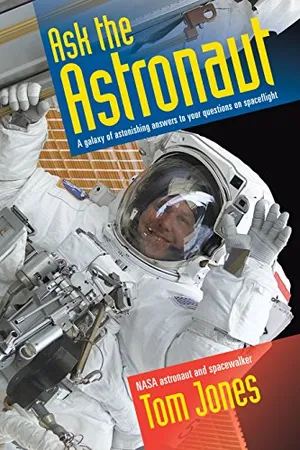What does launch feel like?
/https://tf-cmsv2-smithsonianmag-media.s3.amazonaws.com/filer/b6/d3/b6d3a26e-0be4-4b55-a4f2-c622f5c43beb/sts-27.jpg)
Q: What does launch feel like? What thoughts are running through your mind as you wait to lift off, launch and go through the usual launch procedures? (Pat Pilcher, Wellington, North Carolina)
My crew was strapped in for about three hours before launch, giving the launch team time to complete final preparations with the crew’s participation in the cabin. I had plenty of quiet time during the countdown to think about the job ahead, rehearse mentally my initial duties in orbit, and pray for my own safety, my crew’s success, and my family’s future. My anxieties were not for my personal safety, but were instead worries about my personal job performance when I got to orbit: Would I be up to the tasks ahead of me? On each of my launches, I definitely experienced butterflies in the final minutes of the count.
When the main engines ignited six seconds before liftoff, the entire orbiter rattled and shuddered like a skyscraper in an earthquake. A deep rumble shook the cabin as the main engines came up to full thrust. At T-minus-zero, the solid rocket boosters ignited, giving me a massive kick in the back as they blasted our ship off the pad. The pounding exhaust from the twin boosters shook us continually as we accelerated at 2.5 Gs, ripping through the lower atmosphere under seven million pounds of thrust.
At around 45 seconds the engines throttled down to reduce the stresses on the shuttle’s structure while experiencing “maximum dynamic pressure,” called “Max Q.” When through that milestone, the engines throttled back up to full thrust, with the spine-tingling scream of the slipstream outside the cabin clearly audible. It was the sound of immense power unleashed in barely controlled fury.
Two minutes after liftoff the empty boosters peeled off the external tank with a giant bang, bathing our flight deck in a momentary flash of their separation motors. The three main engines still ran at over a million pounds of thrust—but with almost no vibration—pushing us upward with a comfortable 1G acceleration. We were now above most of the atmosphere, so the slipstream noise was behind us.
As the external tank fed those engines and grew ever-lighter, though, the shuttle gradually accelerated to 3 Gs and kept us there for the final minute of the ride to orbit. That sustained acceleration was an attention-getter. It felt as if two of my friends were standing on my chest and wouldn’t get off! At that point I was just praying that the machine would hold together for the final minute as we ticked off the final mach numbers: 22, 23, 24, and finally, Mach 25. Done! At main engine cut-off, thrust dropped to zero in just a half-second, the pressure on my body vanished, and we were afloat under our straps, in free fall at last. We’d lived to make it to orbit, and to start our mission at last. It was an exhilarating sense of physical and mental relief at the passing of that risky phase of liftoff and ascent to orbit.
Launch experiences on new orbital spacecraft will be similar to the shuttle, but the acceleration levels, time to orbit, and the vibration and sequence of bangs, jolts, and staging events will vary.
Have a question about space? It may already have been answered.
A Note to our Readers
Smithsonian magazine participates in affiliate link advertising programs. If you purchase an item through these links, we receive a commission.
